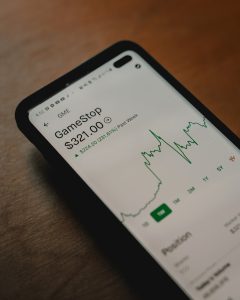Forex trading is all about making informed decisions based on market trends. Trend analysis is a crucial part of forex trading that helps traders identify the direction of the market and make profitable trades. The forex market is highly volatile, and the prices of currency pairs fluctuate rapidly. Therefore, understanding how to determine trend forex is essential for any trader looking to succeed in this market. In this article, we will discuss some of the methods used to determine trends in forex.
Definition of a Trend
Before we dive into how to determine trend forex, it’s essential to understand what a trend is. A trend is the direction of the market price movement over a specific period. There are three types of trends in forex trading – uptrend, downtrend, and sideways trend.
An uptrend is when the price of a currency pair is increasing over a period. A downtrend is when the price is decreasing over a period, and a sideways trend is when the price is moving within a range without any clear direction.
Trend Indicators
There are various trend indicators that traders use to determine the direction of the market. These indicators are mathematical calculations based on the price of currency pairs. They help traders identify the trend and make informed trading decisions. Some of the popular trend indicators include:
Moving Averages: Moving averages are the most commonly used trend indicators in forex trading. They calculate the average price of a currency pair over a specific period. Traders use moving averages to identify the direction of the trend and the support and resistance levels.
There are two types of moving averages – Simple Moving Average (SMA) and Exponential Moving Average (EMA). SMA is the average price of a currency pair over a specific period, while EMA gives more weight to recent prices.
Ichimoku Cloud: Ichimoku Cloud is a popular trend indicator that shows support and resistance levels, momentum, and trend direction. It’s a complex indicator that consists of five lines, including the Tenkan-sen, Kijun-sen, Senkou Span A, Senkou Span B, and Chikou Span.
The Tenkan-sen line shows the short-term trend, while the Kijun-sen line shows the long-term trend. The Senkou Span A and B lines show the support and resistance levels, while the Chikou Span line shows the current price relative to the past.
Relative Strength Index (RSI): The RSI is a momentum indicator that shows the strength of a trend. It measures the speed and change of price movements to determine the overbought and oversold conditions of a currency pair.
An RSI value above 70 indicates that a currency pair is overbought, while an RSI value below 30 indicates that a currency pair is oversold. Traders use the RSI to identify the strength of a trend and make profitable trades.
How to Determine Trend Forex
Now that we have discussed the popular trend indicators let’s dive into how to determine trend forex. There are several methods that traders use to identify trends, including:
Visual Analysis: Visual analysis is the most basic method of determining trend forex. Traders use charts to identify the direction of the market. They look for patterns, support and resistance levels, and trend lines to determine the trend.
Visual analysis requires a trader to identify the highs and lows of a currency pair over a specific period. An uptrend is identified by higher highs and higher lows, while a downtrend is identified by lower highs and lower lows. A sideways trend is identified by a range-bound movement without any clear direction.
Moving Average Crossover: Moving average crossover is a popular method used to identify the direction of the trend. Traders use two moving averages – one short-term and one long-term – to identify the trend.
When the short-term moving average crosses above the long-term moving average, it’s a signal of an uptrend. When the short-term moving average crosses below the long-term moving average, it’s a signal of a downtrend.
Ichimoku Cloud: Ichimoku Cloud is a comprehensive method of determining the trend forex. Traders use the five lines of the Ichimoku Cloud to identify the direction of the market.
When the Tenkan-sen line crosses above the Kijun-sen line, it’s a signal of an uptrend. When the Tenkan-sen line crosses below the Kijun-sen line, it’s a signal of a downtrend. The Senkou Span A and B lines show the support and resistance levels, which also help traders identify the trend.
Conclusion
Trend analysis is a crucial part of forex trading that helps traders identify the direction of the market and make informed trading decisions. There are several methods of determining trend forex, including visual analysis, moving average crossover, and Ichimoku Cloud. Traders also use various trend indicators to identify the trend, including moving averages, Ichimoku Cloud, and Relative Strength Index. Understanding how to determine trend forex is essential for any trader looking to succeed in the highly volatile forex market.





